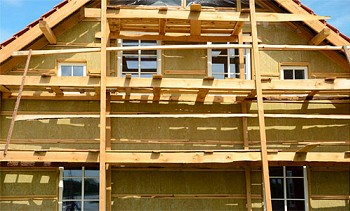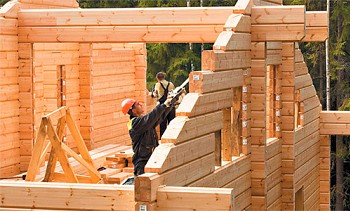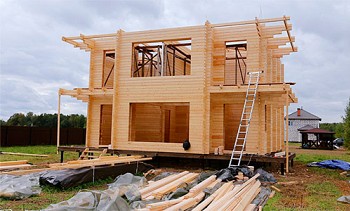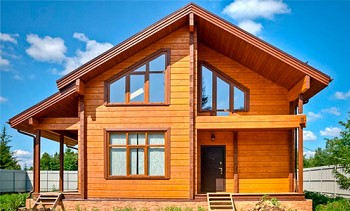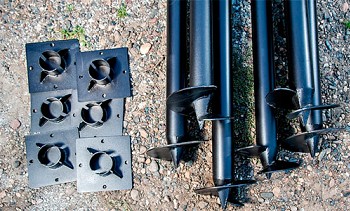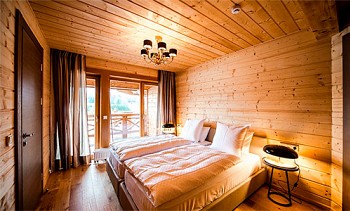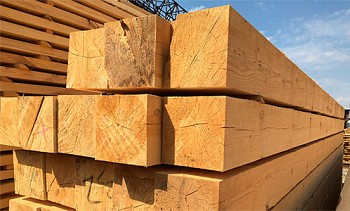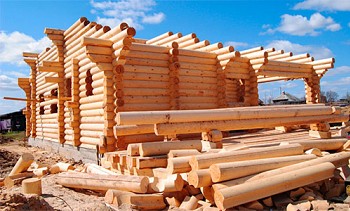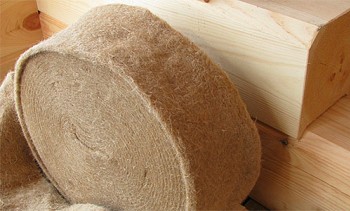Each house must have a solid foundation that transfers the load of its weight to the ground. Houses made of timber are resistant to deformation and a relatively small mass. This feature slightly reduces the requirements for supporting structures for them. In ancient times, chopped huts were placed on large stones or even on larch decks. Today we have the opportunity to choose from several types of structures.
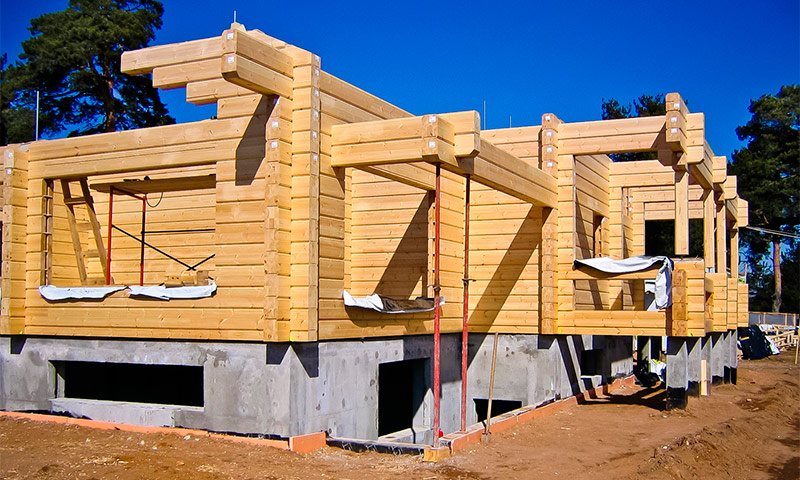
Content:
Foundation Type Selection Factors
The stronger and more reliable the support, the better, but excessive massiveness means extra costs that are not always justified.
Which foundation is best to choose for a house from a bar depends on many factors:
#1.
Weights and structure construction.

#2.
The type of soil, its hardness, heaving, stability of behavior when wet.

#3.
Groundwater level, rainfall, seasonal variations in humidity, topography.

#4.
The presence of the basement, the availability of materials, economic calculations.

How the foundation affects the choice of foundation
Before deciding which foundation to choose for a house of timber, you should study the properties of the soil at the construction site. The bearing ability, mobility, heaving are important here. According to the structure of the base are divided into several types.
Rock and clastic soil
Bases in the form of rock or a dense embankment of solid debris have the highest bearing capacity, and their behavior is practically independent of moisture and the level of groundwater. Tape and columnar shallow and shallow foundations work perfectly for them. In these soils it is very difficult, and often impossible to build a basement under the house.

Sandy soil
Soils with a high sand content are stable and reliable foundations for the home. Good drainage qualities of sand practically exclude frost heaving, with the exception of cases of flooding above the freezing level. With a consistently low groundwater level, any type of foundation can be used. With seasonal flooding, the best choice would be pile or columnar, with a sole deepening below the freezing depth.

Clay soil
Clay soil in a dry state has a bearing capacity comparable to stone. But its properties change dramatically when moistened. In addition, it has the property of heaving during freezing. If groundwater does not come close to the base of the foundation, and the surface layers are protected from precipitation and flood waters, then any foundation is equally effective on clay, provided that measures are taken against frost heaving.

If groundwater or flood rise is possible, it is better to put the house on a monolithic slab of reinforced concrete. If at the same time there is a dense rock at an accessible depth that can serve as a support, then you can make a pile foundation with a rigid strapping that turns the pile field into a single structure.
In which case to use one or another type of foundation
There are different types of foundations. Each of them has its own area of greatest efficiency.
Strip foundation
Structurally, this is the simplest foundation. It is located under all the bearing walls and has the appearance of a continuous tape. Due to the large footprint, it is characterized by high bearing capacity and can be used under heavy walls and structures.

According to the depth of the sole, the strip foundations are divided into shallow, deep and shallow. Recessed foundations are used under heavy structures and are laid below the level of freezing of the soil to exclude the influence of frost heaving on the sole. The deep strip foundation forms the walls for basements and basements.
For light installations, which include one-story wooden houses, this design is justified only in the case of a basement or basement under the building. A light structure based on deep layers of the soil gives too little load on the base, which in some cases can cause a loss of stability. The influence of the lateral and tangential forces of frost heaving on heaving soils is especially strong.
Shallow foundations are often used in rural housing construction. Trenches up to 0.5 m deep are torn under them, a pillow is laid in them from draining materials - coarse and gravelly sand, gravel, gravel, they are thoroughly compacted and a stone or concrete support "tape" is arranged on top of it. Such a design is much cheaper both in materials and labor. A draining pillow compensates for vertical frost heaving, and lateral and tangential loads are insignificant due to the small contact area of the side surface with the ground.
Strip foundations are used on any sufficiently stable bases. They should not be used on weak, heavily flooded and flooded soils.
Column foundation
A pillar foundation is a series of pillars of stone, brick or concrete connected by grillages.

This design allows you to significantly save materials and reduce the amount of excavation. But due to the technical complexity of grillages, significant savings are obtained only with a sufficient vertical size of the foundation, at which a large difference in the volume of materials is achieved compared to the tape type. The lower binding of the timber house takes on the function of load distribution on the poles. This partially removes the problem of grillages and expands the range of economic profitability of columnar supports.
It is possible to build a wooden foundation on clay soils, to the depth of freezing, if it is planned to build a house without a foundation. If, due to soil properties, climatic and hydrogeological conditions, the foundation is laid at a great depth - 1.5 m or more, then the complexity of the construction of pillars increases sharply. Here we enter the field of pile foundation efficiency.
Pile screw foundation
A screw pile is one of the types of piles used in construction. For private construction, screw piles are best suited, because their installation does not require heavy special equipment. Depending on the diameter and depth of immersion, each pile can be installed by forces of 2-3 people or with the help of a compact power plant, which is easy to deliver to the construction site.

Screw piles hold well on weak and swampy soils. They are insensitive to frost heaving, and the ease of their immersion allows the structure to be supported on deep, dense layers.
The foundation on screw piles can be used on clay and sand substrates, with the proximity of groundwater, in flooded areas, on the shore of a reservoir, on a coastal shallow. The only limitation for them is rocky and coarse soil.
Slab foundation
The slab foundation is a rigid monolithic slab of reinforced concrete. Such a plate has a very large bearing area, due to which it is able to maintain stability even on the weakest soils.

With correctly calculated deepening, such a foundation is called floating due to the fact that its bearing capacity does not depend on the hardness of the base. The load created by the weight of the building is balanced by the pressure of the soil, even in a plastic state.
Under a timber house, such a foundation is advisable to apply on loam with a high level of groundwater occurrence, as well as on unstable sandy loam soils.
To choose the best foundation for a house from a bar, you need to take into account all factors, including the height difference in terms of the house, the possibility of shifts and landslides in the adjacent territory. Based on the above descriptions of foundations and foundations, general recommendations can be made.
- On clastic and rocky ground, a timber house should be placed on a strip or columnar shallow or shallow foundation.
- On a sandy base - on a shallow columnar, and if you need a basement, then on a tape.
- On clay soil, it is necessary to use columnar with a deepening below the freezing level or pile. Tape - for the basement device.
- On a weak foundation, dusty or waterlogged, it is better to use a slab foundation.
When building on a steep slope, the lateral pressure of the soil on the posts and walls should be taken into account. Any soil, except rocky, at large intervals of time behaves like a liquid. He seeks to push out buried structures, and standing on a slope - to overturn. On a steep slope, screw piles show the greatest stability, since they have a developed anchor part, a rigid harness and a relatively thin trunk.
Choosing the foundation for the home is a challenge for professionals. And yet, to navigate this issue is possible and necessary. I hope this article helps to avoid blunders.

